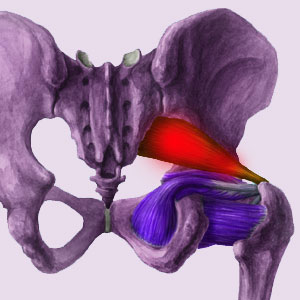
Swimming for piriformis pain is a gentle form of exercise therapy that is used by many patients to find temporary relief from symptoms. Swimming has long been a mainstay of physical therapy and of self-managed chronic pain relief programs. Will swimming provide piriformis pain relief for you?
Swimming is one of the most effective forms of exercise, since it provides a full-body, cardiovascular workout that can be enjoyed at any age or physical condition. Many sports scientists rate swimming as one of the best fitness pastimes a person can practice throughout life. There is no doubt that swimming is incredibly healthy, but will it provide actual reduction in piriformis pain?
This dialog explores the use of swimming as a dedicated form of piriformis exercise treatment. We will investigate the benefits and drawbacks of swimming for piriformis pain and provide our opinions based on experience as caregivers, patients and swimmers.
Swimming for Piriformis Pain Benefits
We have already written much on various other sites of The Cure Back Pain Network about the varied and verified health benefits of swimming. No one will dispute that swimming is indeed a fantastic, fun and healthy activity. Let’s instead take a look at the specific benefits it might provide to patients with piriformis symptomology:
A comprehensive program of exercise and stretching, including swimming, can help to rebalance the anatomy and eliminate muscular imbalances that sometimes affect the piriformis tissue.
Swimming will utilize the muscle gently and without weight bearing, helping to rehabilitate injury or other trauma to the piriformis structure.
Most importantly, swimming will temporarily increase circulation throughout the body, including directly to the piriformis muscle. This will directly counter ischemic pain syndromes that cause pain through reduced circulation and oxygen deprivation. In our experience, when patients feel amazing when exercising, then the pain returns a few hours later, ischemia is most often the actual culprit for pain regardless of what condition was previously diagnosed.
Downsides of Swimming Therapy
There are many downsides to swimming that affect all people and some specific drawbacks that might only affect piriformis sufferers:
Not everyone can swim. Not everyone wants to learn. Despite the tremendous benefits of knowing how to swim, some people just resist the logic of the idea and continue to have no clue how to do it throughout life.
Some people do not have access to a pool or natural swimmable body of water. This is a shame and is very rare, since pools are common. However, if this is your situation, then we are sympathetic.
Some people actually fear the water and will not even consider swimming as an activity for health, rehabilitation of enjoyment.
Some piriformis patients suffer increased symptomatic activity when swimming or performing other types of physical activity. These cases might endure or might improve with time spent performing the activity. If the piriformis spasms during swimming, the patient might suffer terrible pain and might also have a panic attack if they can not continue and are in deep water. For this reason, we always suggest staying in water that is not over shoulder height for safety reasons.
Swimming for Piriformis Pain Opinions
We are not only caregivers and some of us patients as well, but many of us are active swimmers, including our Founder and Chief Editor. We definitely recommend swimming on every level for health, wellness and enjoyment, as well as for specific rehabilitative and exercise therapy needs. However, as detailed in the section above, swimming is not ideal for every patient and every piriformis diagnosis.
If you are not sure about how you will react to swimming, you can always simply give it a try. Worst case scenario will prove that it provides no real benefit to you. Best case scenario might provide a complete cure for your pain. However, since there are few downsides to consider and huge general health benefits bestowed just by trying, we can certainly suggest swimming as one optimal form of exercise therapy for piriformis syndrome and all almost all forms of chronic pain, regardless of diagnosis or origin.
Piriformis Pain > Piriformis Exercises > Swimming for Piriformis Pain





